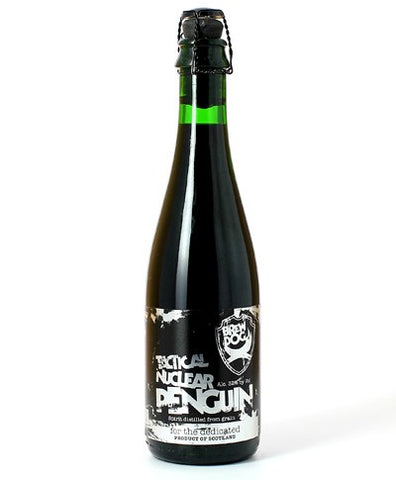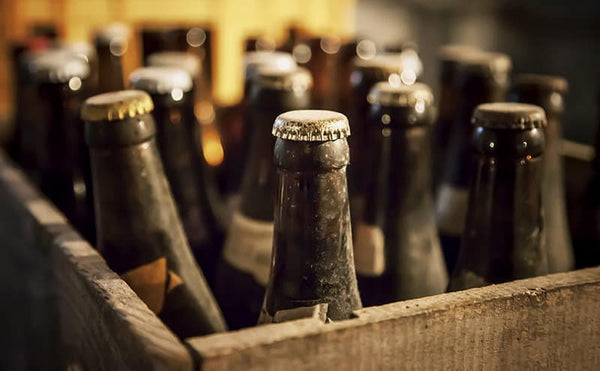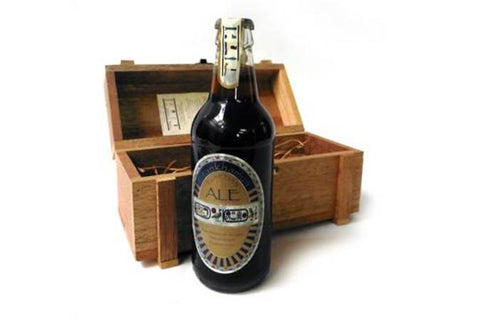In every part of the world there are breweries that produce excellent beers, consumed daily all over our planet. But perhaps not everyone knows that special, niche beers are born, with very high costs, studied by master brewers who use excellent raw materials and whose limited edition explains the reasons for the high prices, which in some cases can exceed a thousand dollars. Some productions are anniversary productions, made to celebrate special events or to raise funds for charity. In any case, however, the starting point for fixing the final price is given by the auctions, which see the usual passionate collectors of rarities as real protagonists. There are also unique bottles, hundreds of years old, or discovered by chance, or other ones that are jealously hidden and never drunk.

![]()
Starting from these assumptions, we should not be surprised if in first place with the highest price among fermented blondes, we find a beer that has cost its passionate buyer the stratospheric sum of well over 500 thousand dollars. We are talking about a 'unique' beer with immense historical value, the Allsopp Arctic Ale, whose exorbitant price, is justified by the fact that it is more than 140 years old, and was part of the Arctic expedition of 1875 led by Sir George Nares. It is said that the case was found by chance in an old English garage, then put up for auction for this exorbitant sum. Of that case, it is not known how many bottles were found inside it, so we cannot know what the price of each individual beer is.

![]()
A place among the most expensive beers is also occupied by Antarctic Nail Ail which, not even doing it on purpose, seems to come from the opposite pole, at least in the name. Its cost is "only" $ 1,815. An extremely excessive price for a single beer, but still much less than the previous one. The value of the bottle was set during an international auction; relevant to the determination of its price was the fact that they were produced only 30 bottles.
With the cost of $ 1,722 we then find the Cantillon Loerik 1998, a beer produced with a particular preservation process. It is precisely because of this last great special production technique that its cost has literally risen; at least in this case the merit and the value are all the result of his special production technique. Certainly not everyone, however, is willing to spend that amount to taste it.

Utopias instead it is a Limited Edition beer by Samuel Adams, a US beer brand of the Boston Beer Company. It is a limited edition barrel aged beer, a new version that is released by the company every two years. Utopias is illegal in some US states due to its very high alcohol content of 28 ° (five times higher than a "normal" US beer). It must be said that Samuel Adams only produces about 13,000 bottles and certainly not cheap: the retail price for each individual beer is $ 240. "We pioneered the barrel aging process almost thirty years ago. and we continue that tradition today, ”said Samuel Adams founder Jim Koch to the press. Utopias Limited Edition is a beer that made its debut in 2002 becoming a collector's bottle that increases its value year by year.

After the launch of the Tactical Nuclear Penguin, a "war" broke out between the Scots of Brewdog and the Germans, for the production of the most alcoholic beer in the world. After the presentation in Germany of the 'Tactical' with an alcohol content of 40 % vol, Brewdog's response is not long in coming; this is how Sink The Bismarck is born with its 41% alcohol. The latter is produced like the Tactical with the method of cryo-concentration. The beer is frozen by bringing it to a temperature of about - 20 ° C; through this system, the less alcoholic part freezes and is eliminated while the part with the highest percentage of alcohol remains liquid and is set aside. The higher the number of cryo-concentration operations, the higher the alcohol content In the case of Sink the Bismark, which has 4 times the quantity of hops of a classic IPA, freezing is repeated four times. The final product is a very concentrated special beer. installment, and decidedly aromatic.

![]()
The Tactical Nuclear Penguin (32% vol) is produced to break the record for the most alcoholic beer in the world until then owned by the Schörschbock (31% vol) of the German brewery Schorschbräu. The record, however, is short-lived, the Germans in fact continue the challenge by proposing a new version of the Schörschbock with 40% which obtains the record of the new most alcoholic beer in the world. But once again it is topped with a novelty from Brewdog it has 41% alcohol. The record is thus broken again and the German ship, for now, shot down.
Like the Tactical, this lpa is also produced with the cryoconcentration method. The result is an extreme beer, very concentrated, strongly aromatic with a sweet base, dominated in the finish by tasty balsamic and bitter notes of hops. The first batch consists of a limited number of 200 bottles in all, and it is not known if there will be a replica, but it is known that some bottles will arrive in Italy by mid-March.

In the mid-nineties, a team of master brewers supported by some archaeologists, tried to match with a production of a thousand bottles, a type of beer that had been produced by the ancient Egyptians, and then sold them at auction. Some textbooks illustrate ancient Egypt with hieroglyphs and chariot carvings, show paintings of royal servants, but none are sick and vomit after drinking too much beer. In ancient Egypt, beer was a substantial and essential daily food, consumed by all social classes; in fact, in an ancient painting we see Queen Nefertiti filtering the porridge from her beer, while others portray some workers drinking beer.
Dr Barry Kemp, an archaeologist and Egyptologist from the University of Cambridge and other historians, thought the Egyptian manufacturing process started with bread crumbs soaked in water. The yeast in the bread would ferment the water, turning it into a mushy substance, which resembled chaff. But excavations in a workers' village and a royal brewery affiliated with Queen Nefertiti revealed that the brewers instead used a careful alchemy of malted grains (barley or a type of grain called spelled) to produce a smooth beer.

So it was that Kemp invited a Scottish brewery to Newcastle to recreate a beer that had remained hidden from the days of the pyramids in Egypt. The brewers studied the residues on the shards and the characteristics of the water around the excavation site, but because they didn't exactly know the details for making the beer, they looked for a fanciful creation that they dubbed Tutankhamun Ale. Tutankhamun Ale sold for £ 50 each at Harrods in London, although it's hardly an exact replica of what Nefertiti drank, but beer aficionados were still pleasantly surprised by the golden beer. "It doesn't taste like any beer I've ever tried before" some have said. Others have described it like this: "The taste is very rich, rather malty, and it has a taste that is somewhat reminiscent of chardonnay".
Beer, drunk in moderation, softens the temper, revives the spirit and promotes health.
Cheers!




















